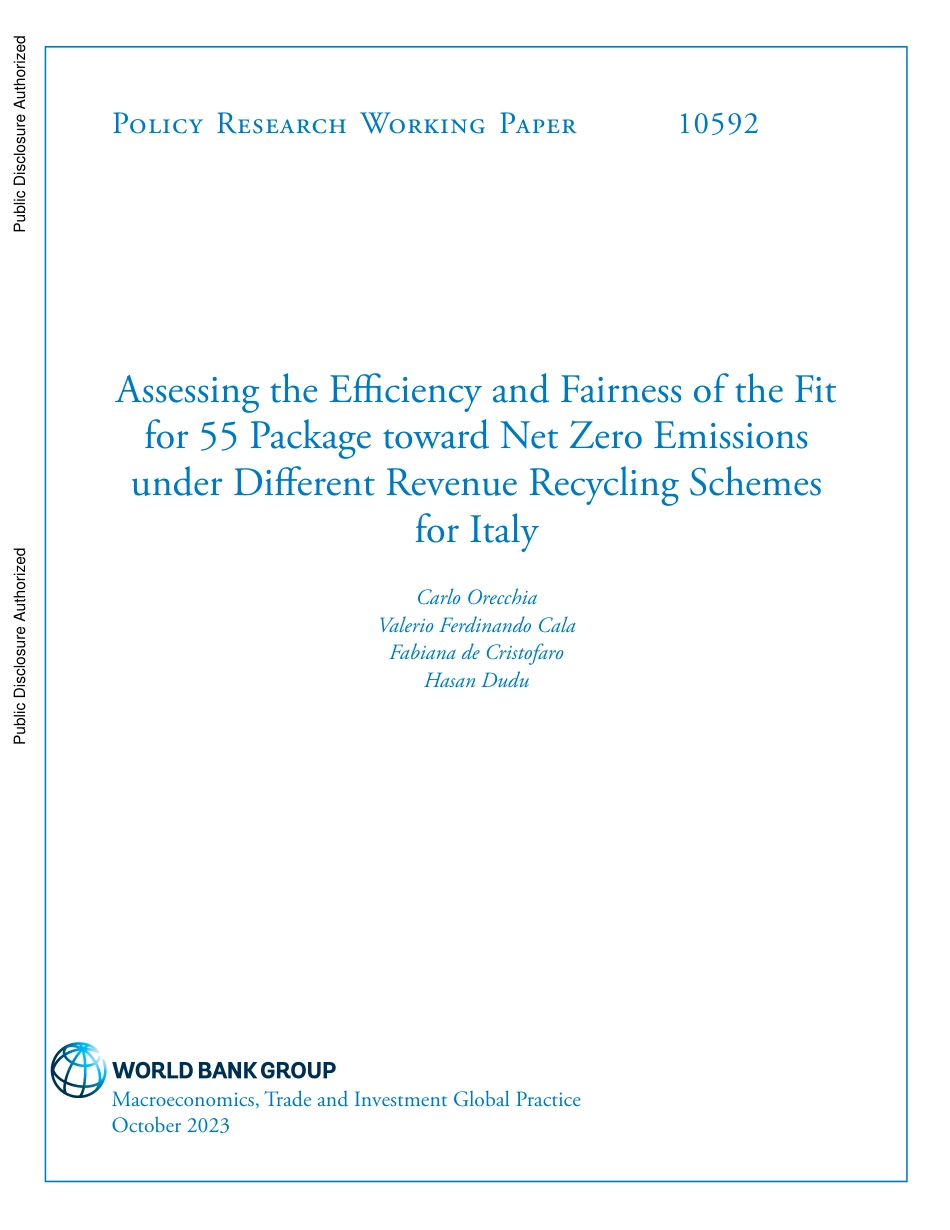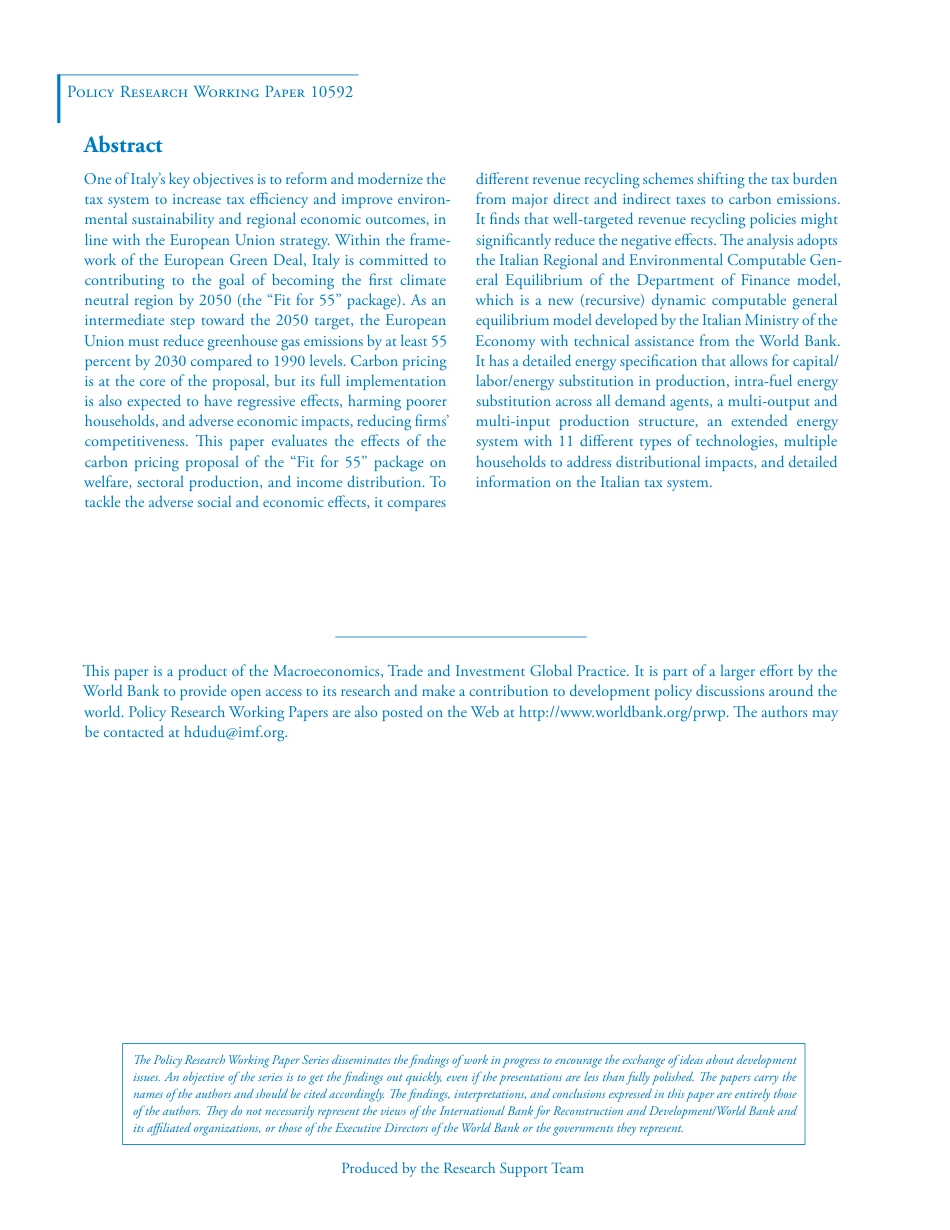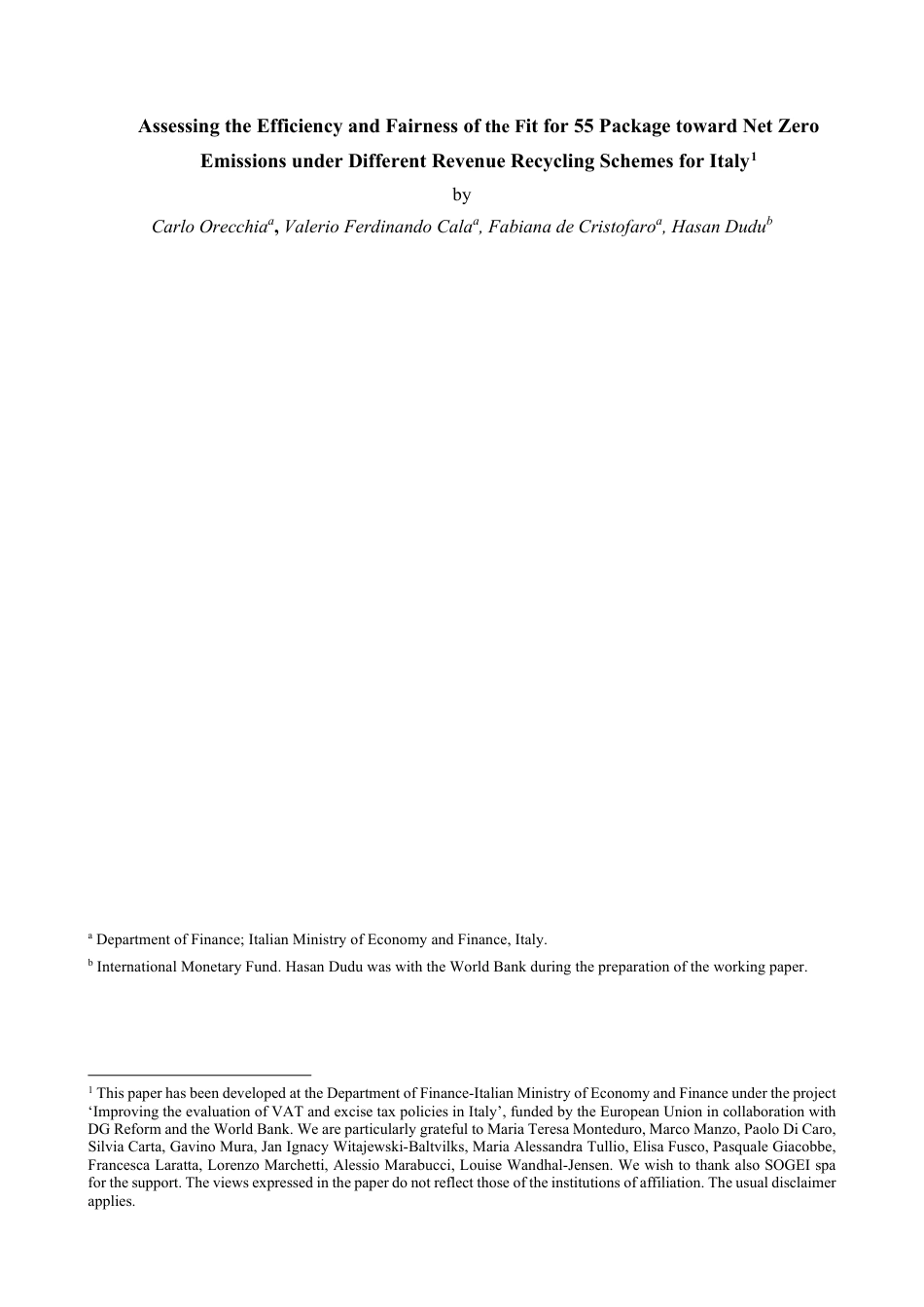Policy Research Working Paper10592Assessing the Efficiency and Fairness of the Fit for 55 Package toward Net Zero Emissions under Different Revenue Recycling Schemes for Italy Carlo OrecchiaValerio Ferdinando CalaFabiana de CristofaroHasan DuduMacroeconomics, Trade and Investment Global Practice October 2023 Public Disclosure AuthorizedPublic Disclosure AuthorizedPublic Disclosure AuthorizedPublic Disclosure AuthorizedProduced by the Research Support TeamAbstractThe Policy Research Working Paper Series disseminates the findings of work in progress to encourage the exchange of ideas about development issues. An objective of the series is to get the findings out quickly, even if the presentations are less than fully polished. The papers carry the names of the authors and should be cited accordingly. The findings, interpretations, and conclusions expressed in this paper are entirely those of the authors. They do not necessarily represent the views of the International Bank for Reconstruction and Development/World Bank and its affiliated organizations, or those of the Executive Directors of the World Bank or the governments they represent.Policy Research Working Paper 10592One of Italy’s key objectives is to reform and modernize the tax system to increase tax efficiency and improve environ-mental sustainability and regional economic outcomes, in line with the European Union strategy. Within the frame-work of the European Green Deal, Italy is committed to contributing to the goal of becoming the first climate neutral region by 2050 (the “Fit for 55” package). As an intermediate step toward the 2050 target, the European Union must reduce greenhouse gas emissions by at least 55 percent by 2030 compared to 1990 levels. Car...



